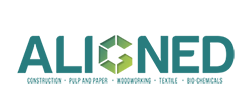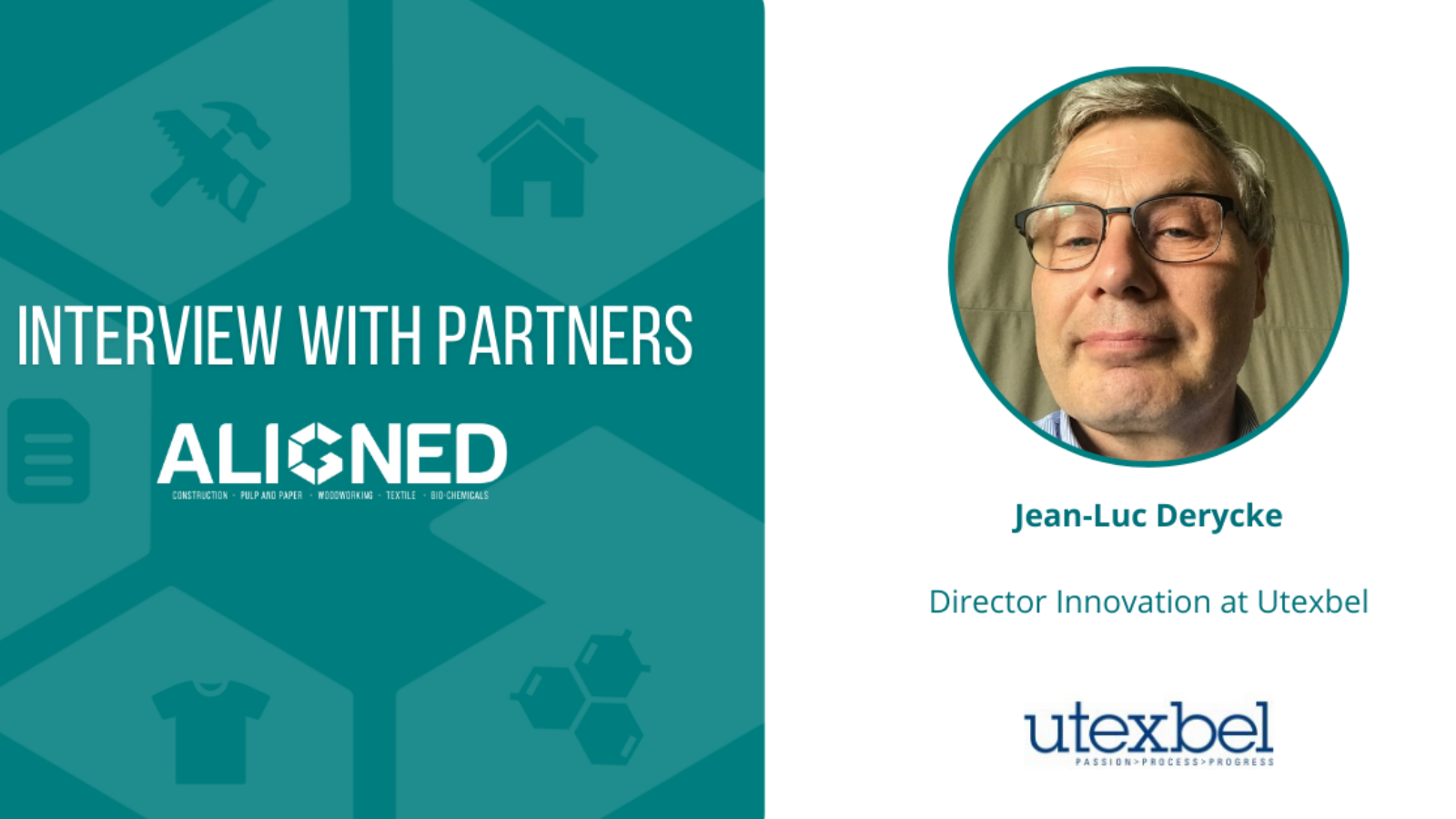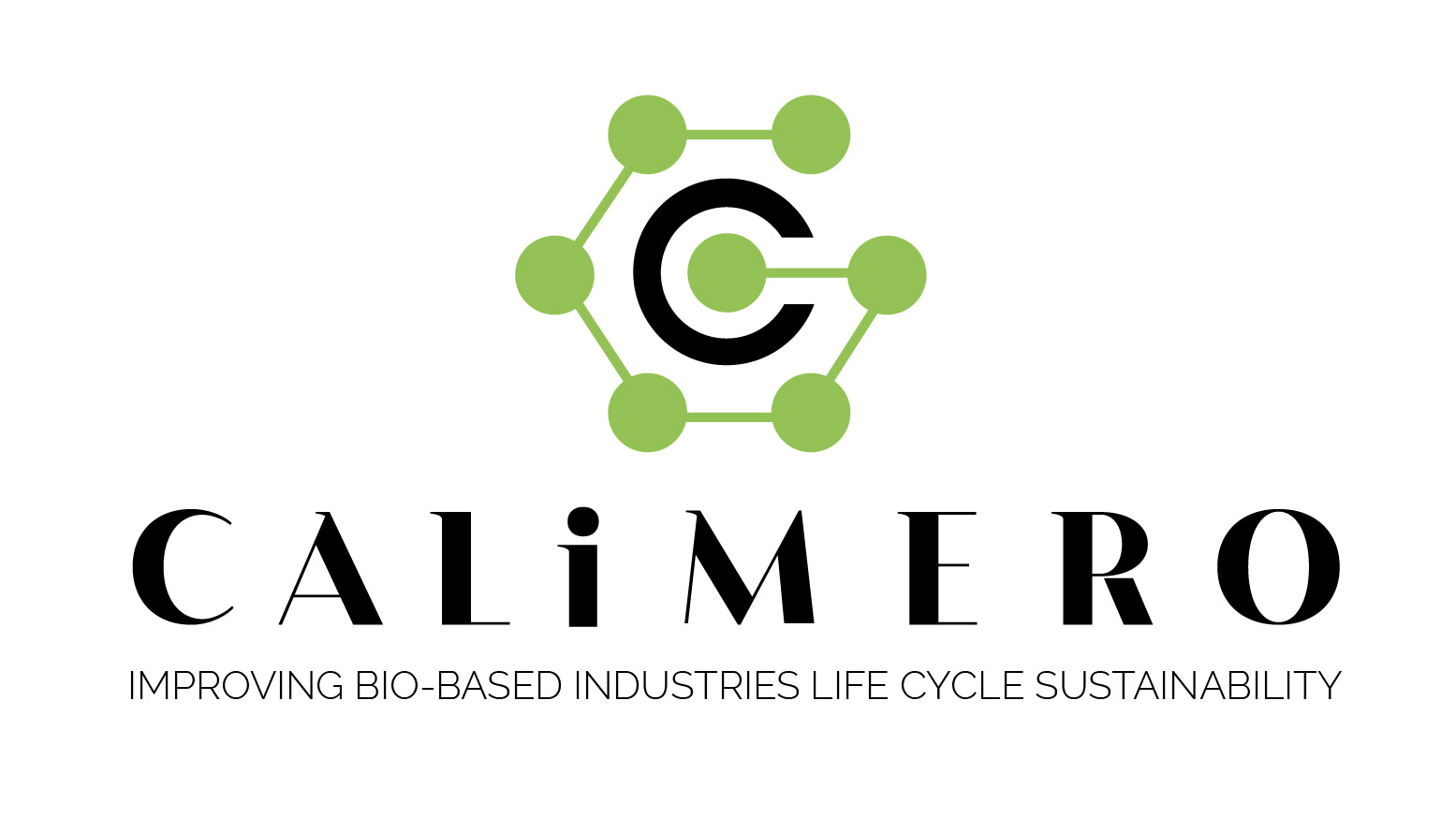In this interview with Mr. Jean-Luc Derycke, representing Utexbel, we explore Utexbel’s specific role within the ALIGNED project. Utexbel is at the forefront of this initiative, aiming to realize circular textile products, including yarns and fabrics, with an environmental impact comparable to their virgin material counterparts.
What specific role does Utexbel play within the ALIGNED project?
A: The role of Utexbel in the Aligned project is the realization of a circular textile product (yarns and fabrics), of which the environmental impact can be compared to equivalent products made of virgin material, based on the knowledge acquired during the Aligned project. Utexbel has for the moment a range of circular yarns and fabrics based on recycled cotton and Polyester/Cotton fibres. The fibres come from various sources: industrial waste, pre-consumer waste, and post-consumer textile waste.
Could you elaborate on the strategy for identifying and implementing solutions in the textile sector as part of the ALIGNED project? What are the primary obstacles or challenges encountered in this process?
A: The most important challenge is to find a suitable end-use for the circular product. For the moment, circular textile products are more expensive than textile products made of virgin fibres. The main reason is that many conventional textile products are produced in low-wage countries and imported in the EU. On the other hand, circular products are produced locally, i.e. in countries with higher wages, as we want a short supply line.
A second challenge for circular products is the lifetime of the textile material. If your customer expects that a garment can be washed for at least 100 times, it makes no sense to create a circular version that only lasts for 20 washing cycles. This is not a sustainable solution. It is important to know the expectations of the end customer to adapt your material choices in relation to the expected lifetime of the end product.
A third challenge for circular products is the homogeneity of the input material. If you want to get mechanically shredded fibers with a spinnable quality level, the input batch should be homogeneous in colour, composition, construction and origin. By construction, we mean knitwear or woven fabrics. By origin, we mean post or pre-consumer or industrial waste. Only in that case, a shredder can set up his machines in an optimal way to get the best possible fiber distribution and removal of external parts enabling good spinnability in the spinning mill.
To enable industrial processing, homogeneous batches should be at least 10 tons of usable textile material.
Besides the industrial feasibility, traceability is also a very important issue, as you need to prove the circular content of a circular article. Identification of batches and input materials is mandatory.
There is also an administrative burden concerning circular products, as, for the moment, there is no clear European regulation concerning the definition of textile waste and textile material that can be reused in the supply chain. In Belgium e.g. we have to rely on regional regulations, which are very stringent. Only a few cases of circular textile products are available, and the administrations don’t know how to deal with the issue: when does old textile material, considered as waste, become a reusable raw material? I hope the future will bring us a sustainable and practical solution. Finally, I can say that the development of circular products is a discovery at each stage and for each project. A lot of issues, on the technical, economic and administrative level have to be settled. We are only at the start of a great adventure!
Jean-Luc Derycke
Utexbel























Add a Comment